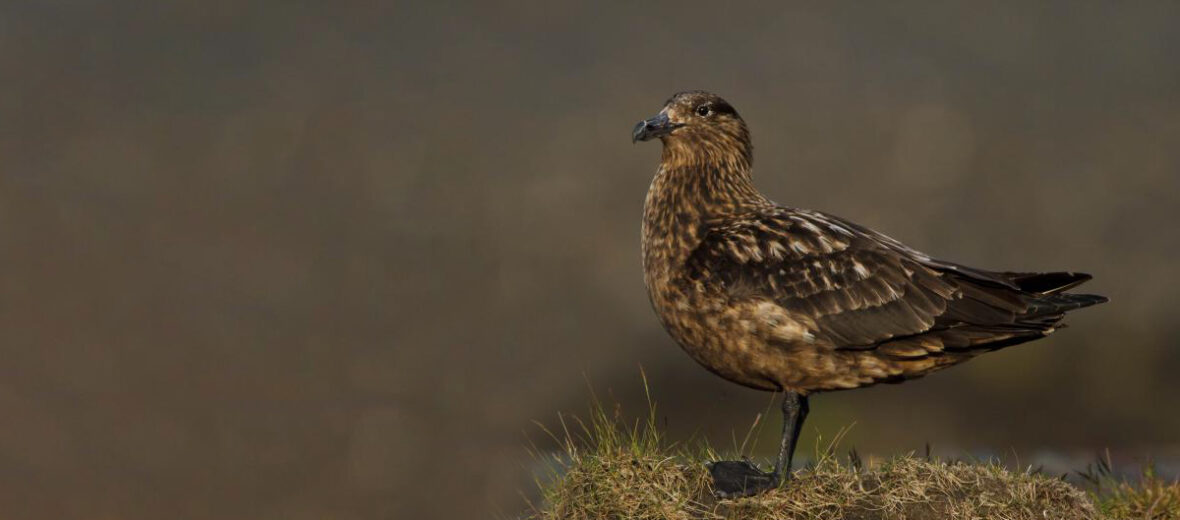
The great skua, aka bonxie, has a wide distribution throughout the central and northern Atlantic Ocean. They can be spotted out at sea and off the coasts of North America, Iceland, Greenland, Europe, Asia, and Africa. These birds prefer to nest in moorlands and rocky islands. Even though they face the threats of hunting; trapping; overfishing; and climate change, they are still listed as Least Concern by the IUCN. Their numbers are considered stable.
First the Stats…
Scientific name: Catharacta skua
Weight: Up to 3 lbs.
Length: Up to 23 inches
Wingspan: Up to 55 inches
Lifespan: Up to 35+ years
Now on to the Facts!
1.) There are an estimated 34,999 wild great skuas to date.
2.) Although solitary, these birds will gather into large flocks when food is abundant.
3.) A group of skuas is called a shishkebab.
4.) They are aggressive aerial apex predatory birds that actively engage in kleptoparasitism (stealing food from other birds).
5.) Great skuas also routinely attack and kill other sea birds as big as herring gulls.
But wait, there’s more on the great skua!
6.) Petrels are also preyed on, at night.
7.) They communicate vocally via a “hah-hah-hah-hah” call, as well as a croaking and quacking sound.
Did you know…?
Great skuas are so brazen that they have little to no fear of humans and will attack approaching humans that near their nesting sites.
8.) Fish, birds, eggs, carrion (dead animals), offal (discarded fish remains), by-catch from fishing vessels, rodents, rabbits, and sometimes berries are all on the menu. They will also even go after foals and lambs.
9.) Great skuas are monogamous (mate for life).
10.) Nesting sites are utilized year after year.
But wait, there’s still more on the great skua!
11.) Females lay 2 eggs that hatch in up to 32 days.
12.) Chicks are precocial (self sufficient) and leave the nest in up to just 48 hours of being hatched.
13.) The chicks begin flying in up to 50 days.
14.) These birds are reproductively mature at up to 8 years of age.
Now a Short Great Skua Video!
This video talks about skuas in general.
Be sure to share & comment below! Also, check out the Critter Science YouTube channel. Videos added regularly!
Want to suggest a critter for me to write about? Let me know here.
Some source material acquired from: Wikipedia & IUCN
Photo credit: Ómar Runólfsson



